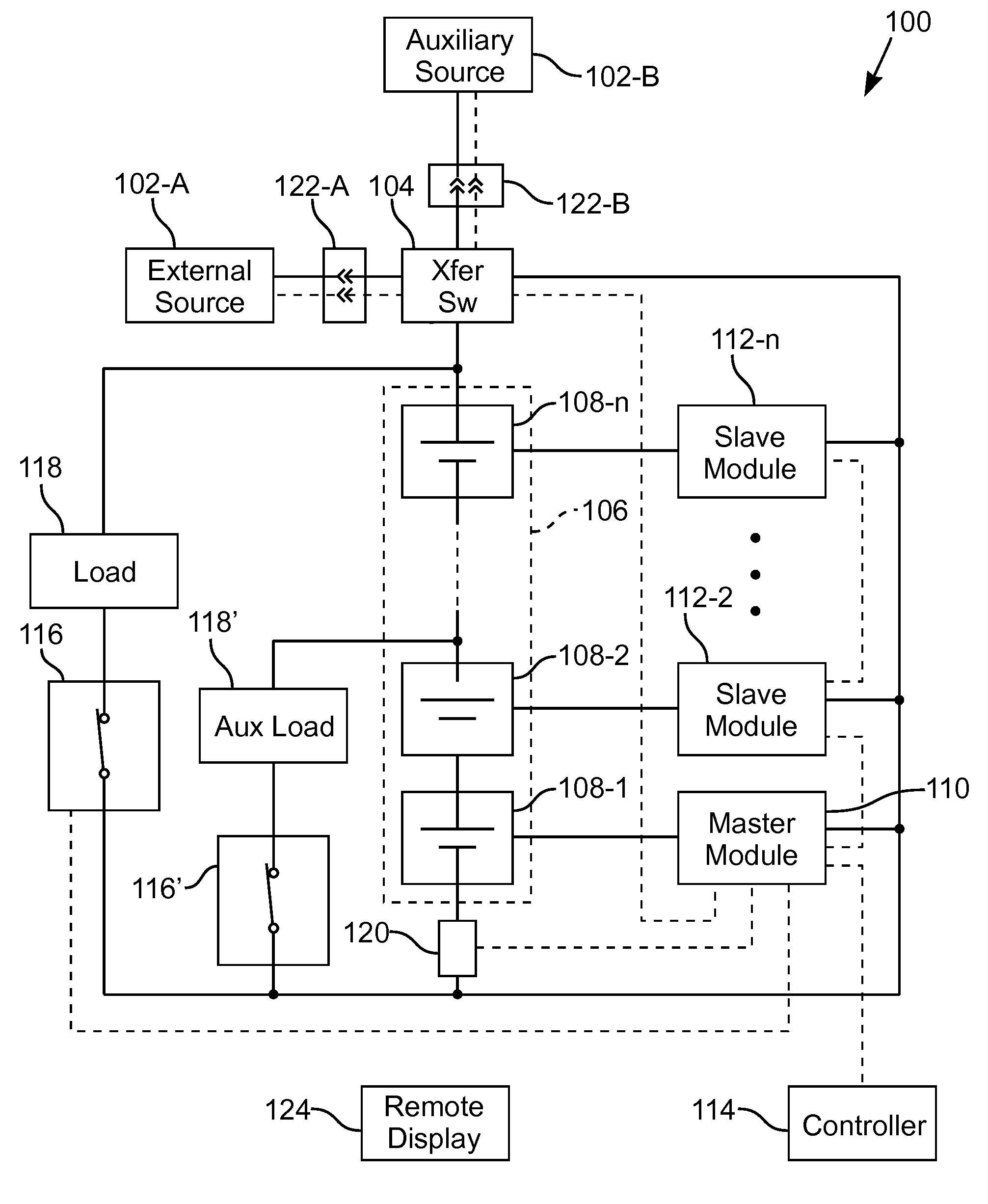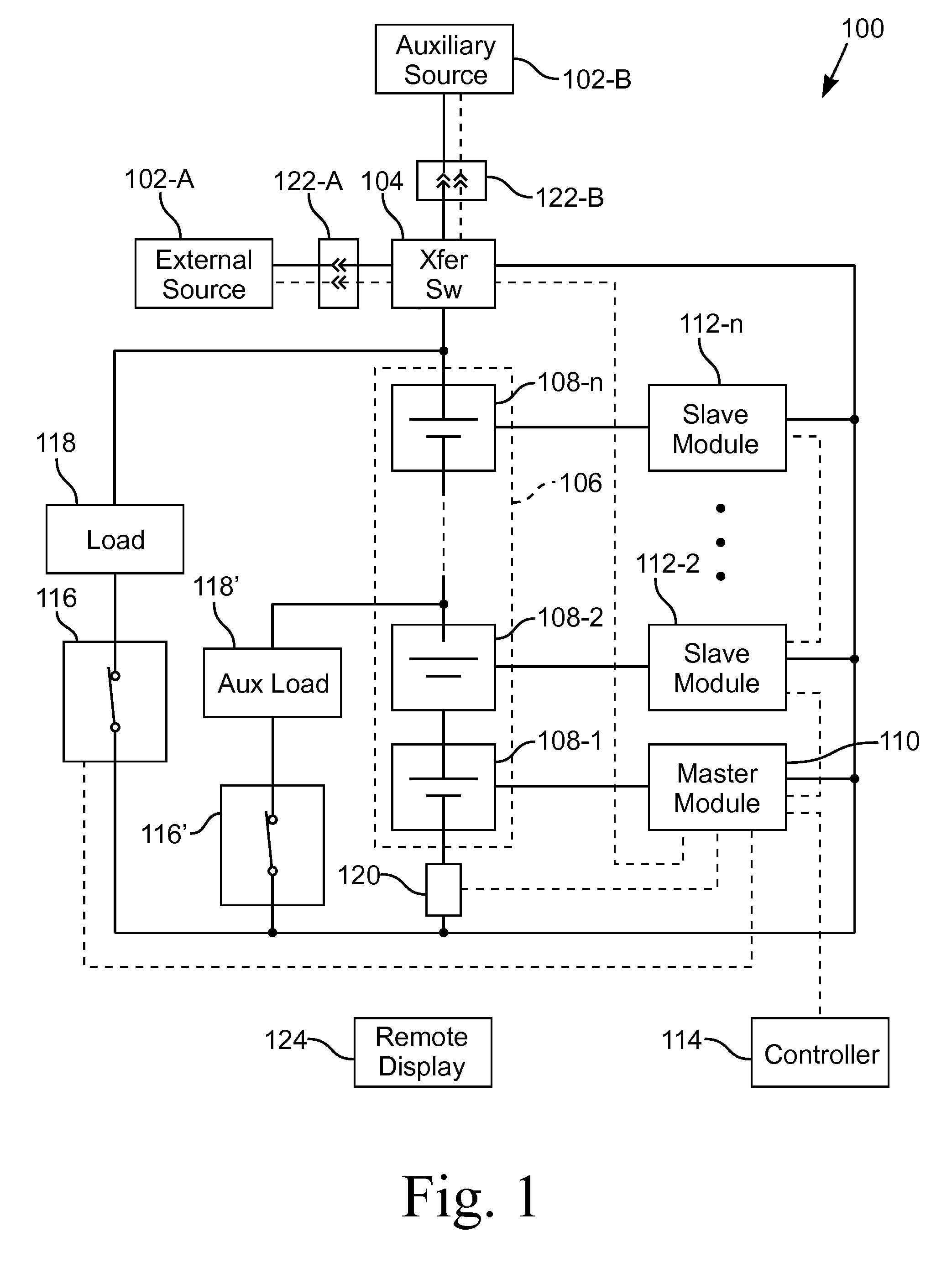Battery management system
a battery management system and battery technology, applied in secondary cell servicing/maintenance, safety/protection circuits, transportation and packaging, etc., can solve the problems of inefficiency, inconvenient replacement and maintenance, and simple arrangement, and achieve easy replacement and maintenance. , the effect of easy configuration
- Summary
- Abstract
- Description
- Claims
- Application Information
AI Technical Summary
Benefits of technology
Problems solved by technology
Method used
Image
Examples
Embodiment Construction
[0024]An apparatus for a battery management system 100 is disclosed. Rechargeable batteries and cells attain a longer life with greater capacity when the battery and its cells are charged and discharged within its optimal operating parameters. Charging or discharging individual cells or groups of cells allows the battery or battery pack to not be limited by a cell that was not fully charged or does not have the capacity of the other cells. The battery management system features include charging, cell equalization, load controlling, load monitoring and protection, and battery pack management.
[0025]Charging returns a cell to a specified state of charge. Cell equalization is balancing the cells in a battery such that the cells have the same voltage and / or state of charge, within limits. Load controlling is control of the load, such as with a motor controller. Load monitoring and protection is measuring the parameters of the load and ensuring that the parameters remain within limits. Ba...
PUM
 Login to View More
Login to View More Abstract
Description
Claims
Application Information
 Login to View More
Login to View More - R&D
- Intellectual Property
- Life Sciences
- Materials
- Tech Scout
- Unparalleled Data Quality
- Higher Quality Content
- 60% Fewer Hallucinations
Browse by: Latest US Patents, China's latest patents, Technical Efficacy Thesaurus, Application Domain, Technology Topic, Popular Technical Reports.
© 2025 PatSnap. All rights reserved.Legal|Privacy policy|Modern Slavery Act Transparency Statement|Sitemap|About US| Contact US: help@patsnap.com



